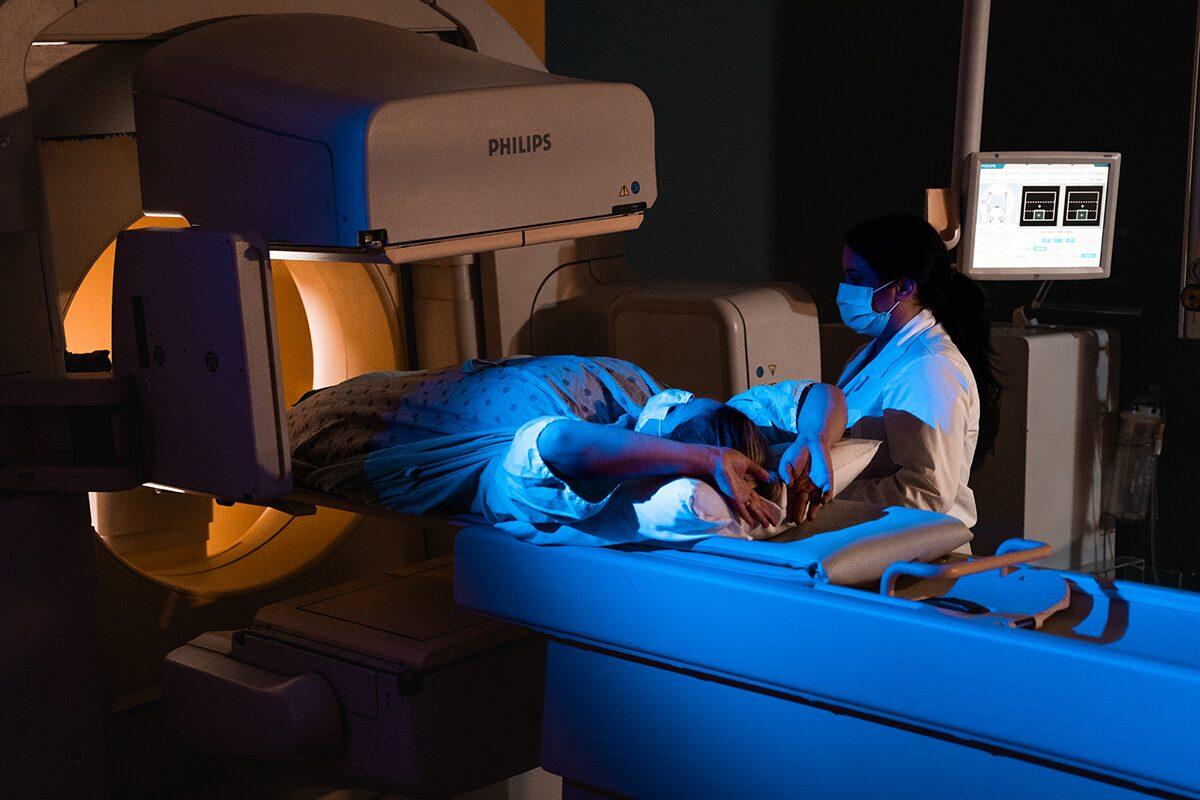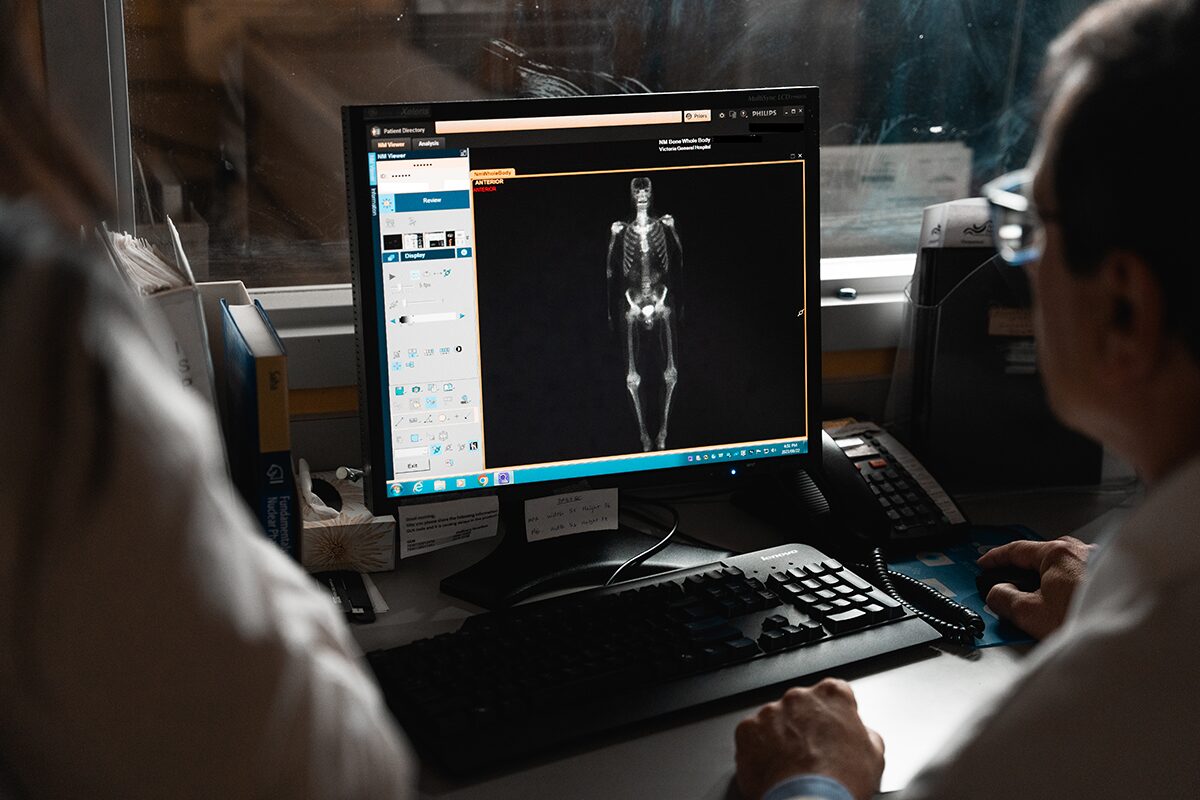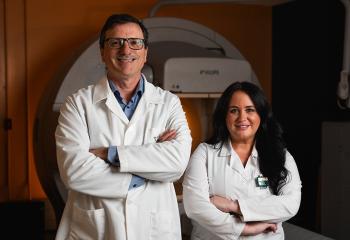
Originally published by The Globe and Mail.
Dr. Daniel Rayson, a medical oncologist at the QEII Health Sciences Centre in Halifax, has long been aware of the value of nuclear medicine in diagnosing and treating cancer, among other diseases. But when that technology is world-leading and state of the art – as are the two nuclear medicine scanners that the QEII is aiming to acquire – he gets very animated.
“These diagnostic tools are major gains,” he says. “For certain types of cancers, they will help us decide what the best treatment might be and whether treatment is working. It’s really an exciting time.”
With the support of generous donors, the QEII Foundation is on a mission to raise $3-million to fund two cutting-edge StarGuide Hybrid SPECT/CT scanners. This acquisition will position the QEII as a leader in nuclear medicine, on track to be the first hospital in Canada to have this technology.
Unlike MRI (magnetic resonance imaging) or traditional CT (computed tomography) machines, nuclear medicine scanners use radioactive tracers to light up, locate and diagnose cancers in the body – even when they’re at a very early stage – and determine whether cancer has spread. Through highly precise 3-D imaging, these scanners can help image brain diseases such as dementia and epilepsy, as well as lung, liver and endocrine tumours and gastrointestinal issues.
They can also provide critical information about a heart’s function by providing enhanced images of cardiac blood flow – allowing for diagnoses of widespread heart conditions that can be difficult to diagnose due to less specific imaging.
Because of their incredible speed and precision, the scanners will reduce the time a patient needs to spend inside the machine, providing a rapid, more comfortable experience, says Dr. Steven Burrell, head of nuclear medicine at the QEII.
“These scans are faster because the detectors are more efficient. Some scans will be cut in time by half,” he says, adding this will allow the hospital to reduce wait times for imaging.
Dr. Burrell points out another benefit to the addition of the scanners: They will be a big draw for researchers from Dalhousie University and farther afield who are interested in conducting clinical trials employing nuclear imaging – leading to medical breakthroughs that will benefit patients in the long run.
“We’re the only program in Atlantic Canada training nuclear medicine physicians and technologists,” says Dr. Burrell. “When people are excited to come and work here, it’s a win.”

More answers for people living with cancer
Dr. Rayson notes that Atlantic Canada has always had a higher burden of cancer than other parts of the country, and many of these patients are diagnosed and treated at the QEII.
It’s why the StarGuide Hybrid SPECT/CT scanners, a project that is part of the QEII Foundation’s $100-million We Are fundraising campaign to transform health care, will be a game changer for the region. They will replace outdated scanners that are currently operating at full capacity.
“The last thing that cancer patients want when they go through testing are more questions than answers,” says Dr. Rayson. Because of their precision and sensitivity, the StarGuide scanners will provide more precise answers to the most common questions he hears every day: ‘Has my cancer spread? Is it aggressive? What treatment should I have? Did my treatment work?’
“The molecule that’s injected – it shows up as a glow [in the scanners] and it can find smaller areas of cancer,” Dr. Rayson explains.
For certain types of cancers, the scanners will also help inform the best treatment options. Dr. Rayson says that the field of nuclear medicine is expanding into offering specific treatments using isotopes, or radiologically active atoms, which can deliver precise, radiation therapy for certain cancers within the body while sparing normal, healthy cells.
“In this way, the hope is to further improve survival and quality of life with minimal side effects,” he says.
Greater precision in diagnosing heart disease
In addition to cancer and other diseases, the scanners will be instrumental in identifying heart disease and coronary artery disease, says Dr. Robbie Stewart, a cardiologist and director of the echocardiography laboratory and non-intensive cardiac testing at the QEII, which sees 15,000 patients annually.
Dr. Stewart says that when patients with concerning cardiac symptoms require imaging, the team injects them with a tracer, has them perform an exercise stress test and uses scanners to examine cardiac perfusion – how blood flows through the heart. The injected tracer can zero in on areas that are narrowed or not receiving a lot of oxygen.
The new nuclear medicine scanners and their enhanced imaging capabilities will be critical in determining a patient’s risk of heart issues, he says.
“You’re increasing your accuracy with these machines,” says Dr. Stewart. “It reduces the chances of a mistake.” He notes that in some cases, current scanners can miss dangerous narrowing in cardiac arteries when all arteries are affected – a rare condition known as balanced ischemia. The new scanners will be able to offer a more detailed look at these narrowed arteries, preventing a misdiagnosis.
Finally, the new scanners will be invaluable in training incoming radiologists and nuclear medicine physicians, says Dr. Burrell, ensuring the next generation of specialists are well-prepared for the future. The QEII performs 4,000 patient scans a year and “we want to train people on the most up-to-date equipment.”
Dr. Burrell urges donors to support the QEII Foundation’s fundraising campaign to fund these types of innovations in nuclear medicine. With the addition of the StarGuide Hybrid SPECT/CT scanners, the QEII will enter a new phase of world-leading excellence, meaning better outcomes for the people of Atlantic Canada.
In fact, Dr. Burrell is one of 40 QEII radiology and nuclear medicine physicians supporting this project. The group knows the impact firsthand, which is why they’re matching all donations to the QEII Foundation in support of these scanners up to $100,000 until December 31.
“Bringing these scanners to the QEII will lead to more accurate diagnoses, greater efficiencies and the retention of physicians,” he says. “There are so many advantages to this, and this is why we are compelled to do everything we can do to help patients access this technology.
Learn more about the StarGuide Hybrid SPECT/CT scanners and support nuclear medicine at the QEII today at QE2Foundation.ca/NucMed. Donate by December 31 to double your impact.
